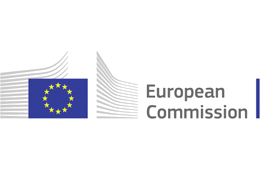MoVeIT!
- MoveIT!
For cost effective modernization of the inland fleet for freight transport, MOVE IT! develops a suite of options for the modernisation of inland ships that meet the challenges of: over-aging of the fleet, climate change and stronger environmental objectives, and provides decision support regarding the application of these options.
In this suite of options, knowledge gained from new buildings, technology transfers from other transport modes,improvement of energy efficiency, ecological performance,transition to the post-fossil-fuel-era, and adaptation to new ADN rules are prominent.
One of the main focal points of MOVE IT! is the modernisation of the ships drive and power system in a way that is matched to the conditions it will face throughout its life. This will result in significantly better performance compared to the ships’ old systems that are designed to fulfil a single design condition.
First, the conditions the ship will encounter are established through full-scale measurements. Using the operational profiles resulting from these measurements, the ships power systems and hydrodynamics are reviewed and optimal, integrated solutions are developed that minimise investments and ecological impact while maximizing efficiency. Research topics include new power system configurations, alternative fuels,retrofitting techniques for existing engines, improved hull and propulsors and assistance to the captain for efficient sailing. Further crucial modernisation measures are to increase the vessels main dimensions to achieve economical and ecological scale advantages and upgrades of old tankers to meet new ADN requirements.
MOVE IT! also invests heavily in assessing the economic viability of solutions as well as their contribution to environmental improvements. Subsequently, modernisation support for ship owners, policy support and (full scale) demonstrators will contribute to lowering the acceptance threshold for modernisation.
WP1: State of the art and measurements
The MOVE-IT project started with the aim to develop cost efficient modernisations of existing inland water way vessels. The MOVE-IT project on retrofitting of inland waterway ships has been preceded by various other initiatives on this topic which have produced several viable concepts. Moreover ideas from the remote past on improving ship resistance, fuel efficiency and reducing operational costs (both financial and environmental) still exist and may prove worth-while to re-evaluate. Therefore an important work package in the MOVE-IT project is identifying these ideas and initiatives which are pertinent to the objectives of the project. An inventory has been made on retrofitting opportunities/concepts, categorized by four topics:
- Hydrodynamics
- Ship structure
- Mechanical installation
- Operations.
The conceptual retrofitting ideas were all focused on establishing more cost-effective and sustainable ways of shipping. The most promising retrofitting opportunities per category are:
- Adjustable hydrodynamic appendages are worth investigating, e.g. the adjustable bulbous bow and tunnel;
- The combination of different materials, resulting in hybrid structures, are very interesting from a weight and strength perspective. In addition, the use of hybrid sandwich panels in the side structure, may provide increased crashworthiness;
- An obvious retrofitting option is changing to LNG fuel. Most likely this will require an LNG-electric installation;
- The use of traffic control and online voyage planning through adjusted ship operation is very interesting and may result in noticeable fuel reductions.
In discussion with the participating shipping companies five vessels have been selected, to determine the performance by means of full scale measurements. Three push barge convoys were selected and two self propelled barges. During the measurements i.e. speed, RPM, water depth and fuel consumption were measured. A benchmark of the ships has been carried out on the basis of the results of the measurements and the experiences evident in data. While it is difficult to make a fair comparison, because the speed trials have been performed in different sailing areas, when comparing the self propelled barges with the benchmark it can be concluded that both vessels are performing below average. When comparing the push barge convoys, one vessel was performing very well, while the two other vessels were performing below average. The vessels performing below average were further investigated within MoVe IT! by means of CFD calculations.

This project has received funding from the European Union’s Seventh Framework Programme for reasearch, technological development and demonstration under grant agreement no 285405.
- Owner(s) / Author(s)
- MOVE-IT!
- Publication date
- 28/08/2018
- Funding type
- EU
- Date of entry
- 28/08/2018
- Date of updated
- 28/08/2018
- Start & end
- 01/11/2011 - 01/10/2014
